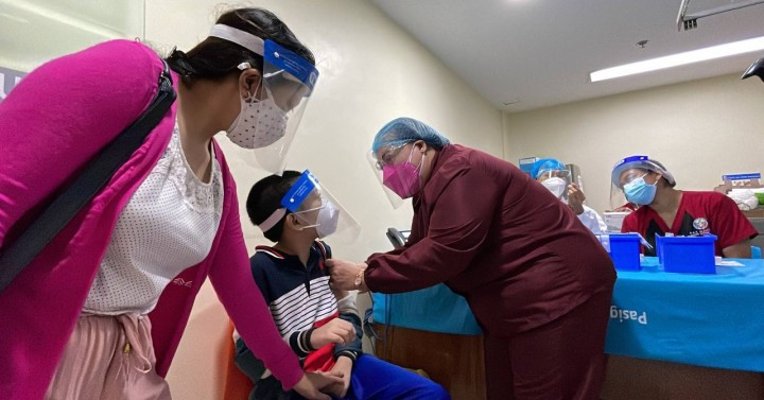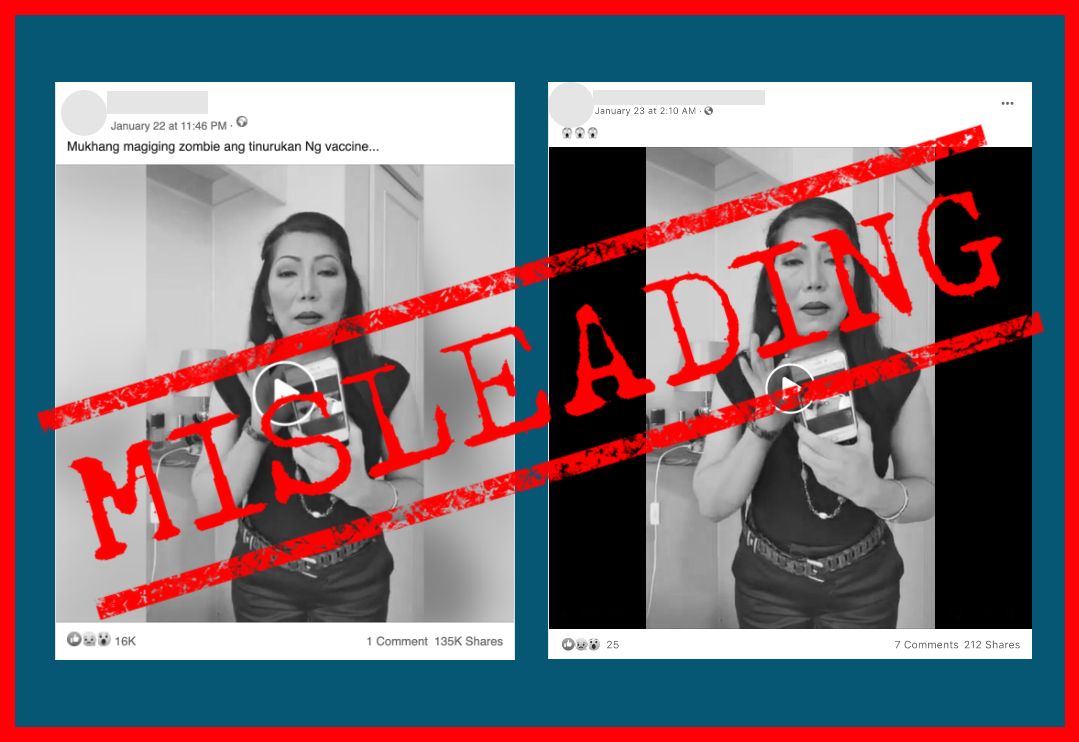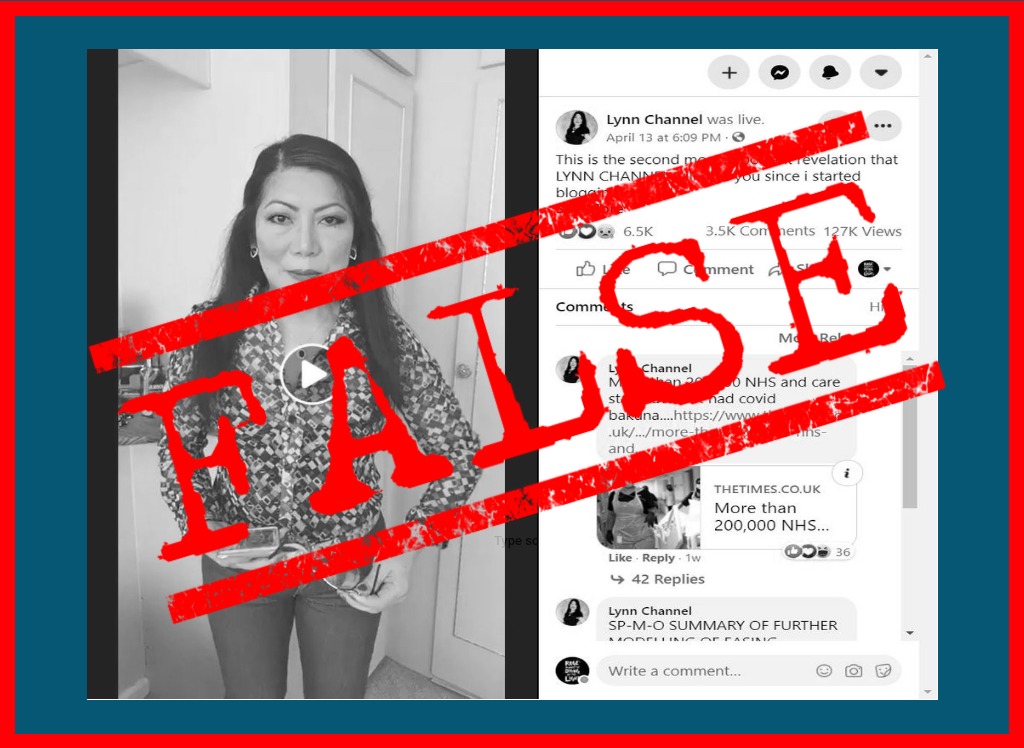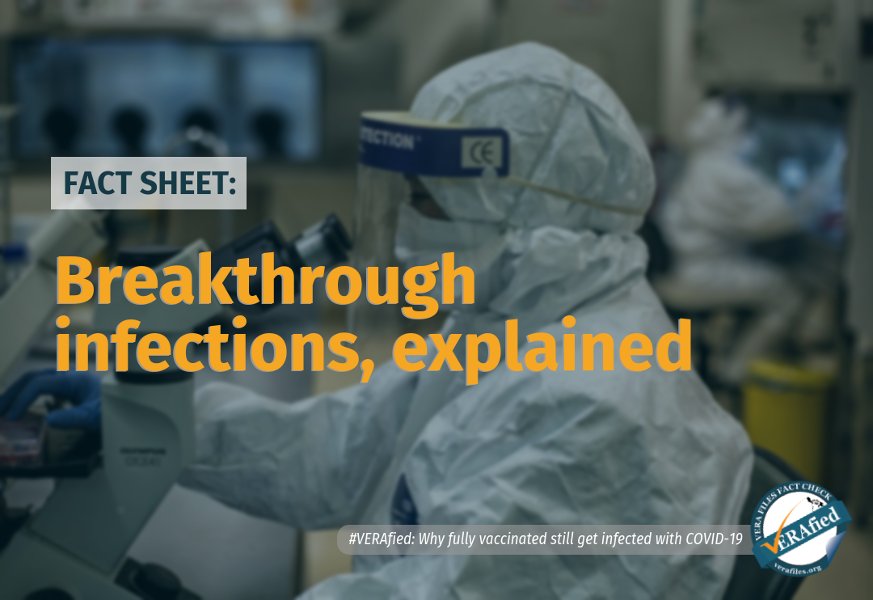Around 12.7 million children aged 12 to 17 are expected to get inoculated against the coronavirus disease 2019 (COVID-19) following the government’s decision to expand the eligible recipients of the nationwide vaccination rollout.
On Oct. 15, the Department of Health (DOH) launched a pilot implementation of pediatric vaccination among children with underlying medical conditions in eight hospitals in Metro Manila, including the National Children’s Hospital, Philippine Heart Center, and the Philippine General Hospital.
A few weeks later, the pediatric vaccinations were met with online misinformation, claiming that “kids don’t need jabs” because of their “natural immunity” to the deadly disease. (See VERA FILES FACT CHECK: FB Page FALSELY claims children have “natural immunity” against COVID-19)
Debunking the claim, DOH has said children can still contract COVID-19, get hospitalized, and transmit the virus to others.
How much protection do children really have from COVID-19? VERA Files Fact Check answers three key questions here:
1. What do we know so far about the immunity of children against COVID-19?
In the course of the pandemic, 23.77 million persons aged below 25 years were infected with the COVID-19 virus, based on World Health Organization (WHO) data from Dec. 30, 2019 to Oct. 25, 2021.
“Children and adolescents usually demonstrate fewer and milder symptoms of severe acute respiratory syndrome coronavirus 2 (SARS-CoV-2) infection compared to adults and are less likely than adults to experience severe COVID-19,” the global agency said in an interim statement issued on Nov. 24.
A team of researchers in Germany suggested in a peer-reviewed study, published on Aug. 18 in Nature Biotechnology, that children are “better able to control early-stage infection” of the novel coronavirus compared to adults partly because the immune cells in their upper airways (nose) are “pre-activated and primed for virus sensing.” This means they are faster in fighting off viruses, including the COVID-19 virus, which they have not encountered before.
The researchers analyzed about 270,000 cells from nasal swab samples of 86 people aged between four weeks and 77 years old, including about half who were infected with SARS-CoV-2.
They also looked at the larger quantities of immune receptors in the upper respiratory tract of healthy children, resulting in their “increased ability” to respond to viral infections.
Such sensors instruct the “efficient early production” of interferons, which are natural proteins produced by the body’s immune system to fight infection, in children. When a foreign substance enters the body, interferons guard the cells and render the environment inhospitable for viruses to multiply.
In an interview with VERA Files Fact Check, Dr. Mary Ann Bunyi, a pediatric infectious disease expert, said this is just one among a few possible explanations why children are “better protected” than adults against COVID-19.
Other proposed explanations include: that adults have more comorbidities than children, implying that they have weaker immune responses; and that the endothelium, which lines “a lot of our organs,” are “more damaged” in adults which predispose them for early clotting and experience severe manifestations of the disease.
But Bunyi said this is the case only for COVID-19. “It’s actually a surprise for us pediatricians because in most of the vaccine-preventable diseases, wherein we advocate immunization, our reason … is the effects on children are more severe,” she said in a mix of English and Filipino.
She cited measles, as an example, in which children who are unvaccinated and get infected for the first time can experience mild symptoms such as high fever, runny nose, sore throat, and watery eyes.
“But it can go as severe as having a bad pneumonia, having brain infection, and even dying from the infection [of measles] itself,” said Bunyi, president of the Pediatric Infectious Disease Society of the Philippines (PIDSP).
She noted that the impact of COVID-19 on children still has many uncertainties, such as its long-term health consequences.
In the current health crisis, she said, “We (pediatricians) did not expect that the virus [would] target the adults.”
2. Do children need to get vaccinated?
Vaccinating children could reduce transmission in communities, particularly in households and schools, according to WHO.
Although there are fewer symptomatic and severe cases among children, Bunyi said those who are vaccinated get an “additional layer of protection.”
The “adaptive immunity” from vaccines produces antibodies and T-cells 一 immune responses that help disarm the virus 一 that are “already directed to a particular microbial agent,” Bunyi said.
DOH has been administering jabs by Pfizer-BioNTech and Moderna, which both use the messenger RNA (mRNA) platform, to adolescents between 12 and 17 years old. Two doses of Pfizer’s Comirnaty are given at an interval of 21 days, while Moderna’s Spikevax, four weeks apart.
AstraZeneca, Janssen, and Sinovac have yet to be endorsed by the Health Technology Assessment Council (HTAC) due to the current lack of clinical evidence on these vaccines for this age group.
For children below 12 years old, Food and Drug Administration (FDA) Director-General Eric Domingo said in a press briefing on Nov. 23 that a vaccine may be available “before the end of the year.”
The agency’s counterpart in the United States (U.S.) allowed the emergency use of Pfizer for children aged 5 to 11 years old after an ongoing clinical trial involving 4,600 participants showed that it was 90.7% “effective in preventing COVID-19” and “no serious side effects have been detected.”
In the trial, the two-dose vaccine is given in lower amounts (10 micrograms) compared to those for adults (30 micrograms).
Meanwhile, in August, the Philippines’ Department of Science and Technology (DOST) Vaccine Expert Panel approved a clinical trial for the China-made Sinovac COVID-19 vaccines for children aged 3 to 17.
FDA’s Domingo has said Sinovac is collating its data for a local study and that this “will be submitted soon.”
Since some children are still ineligible for vaccination, the PIDSP reminded in a Nov. 11 statement that other infection prevention measures “remain equally important” as the pandemic continues to spread.
3. Is the COVID-19 vaccine safe for children?
Safety is the main consideration in giving the vaccine to younger children, said Bunyi, also a member of the consensus panel on the Philippine COVID-19 Living Clinical Practice Guidelines.
“You will usually take a look at the adverse reactions … What’s the dose that will keep my child safe from having adverse reactions or even severe adverse reactions but will keep the vaccine effective and protect her from getting COVID-19?” she said in a mix of English and Filipino.
As of Nov. 21, about 3.5 million adolescents have been vaccinated, according to the FDA. Of these, there are 1,004 reported cases of adverse reactions, including 964 that are “non-serious” and 40 tagged as “serious.”
The most common mild-to-moderate side effects are dizziness, pain at the injection site, increased blood pressure, headache, and fever.
Recently, some countries, including the Philippines, U.S., Singapore, and Taiwan, reported “very rare” cases of inflammation on the heart muscles (myocarditis) and outer lining of the heart (pericarditis), among Moderna and Pfizer vaccine recipients. A causal link has not yet been proven.
Public health experts from Meedan, a global technology nonprofit, explained that myocarditis is a condition caused “most commonly” by viral infections. It may also be caused by bacterial or fungal infections, autoimmune diseases, severe reactions to medicines, and exposure to certain environmental toxins.
Some symptoms of the condition, which “frequently occurs in young men and those with pre-existing medical conditions,” include chest pain, shortness of breath, and heart palpitations.
In managing these adverse events, some health agencies, such as in Singapore and Europe, advised vaccinees to rest and to avoid strenuous physical activity within one week of vaccination.
Locally, Domingo said in a Nov. 25 online forum that this is “being monitored,” and added that “the possibility of myocarditis after vaccination is much lower than the possibility of getting COVID and myocarditis from COVID.”
When asked if teenagers should wait for a “better vaccine” before getting the jab, Bunyi said: “I will not take the risk of waiting for another or better vaccine because we don’t know when the virus will strike you and we don’t even know if the virus … will just hit us simply or it can be severe.”
The WHO Global Advisory Committee on Vaccine Safety maintains that “in all age groups, the benefits of mRNA COVID-19 vaccines in reducing hospitalizations and deaths due to COVID-19 outweigh the risks.”
Have you seen any dubious claims, photos, memes, or online posts that you want us to verify? Fill out this reader request form.
Sources
Department of Health, DOH CLARIFIES PEDIATRIC VACCINATION EXPANSION TO INCLUDE ALL 12-17-YEAR-OLDS BY NOVEMBER 3, Oct. 27, 2021
Department of Health, Circular No. 2021-0464, Oct. 14, 2021
Department of Health, Fact Check, Nov. 8, 2021
Nature, Pre-activated antiviral innate immunity in the upper airways controls early SARS-CoV-2 infection in children, Aug. 18, 2021
Scientific American, Unraveling the Mystery of Why Children Are Better Protected from COVID Than Adults, Aug. 26, 2021
Cell, Type I and Type III Interferons – Induction, Signaling, Evasion, and Application to Combat COVID-19, May 27, 2020
The British Medical Journal, Why is COVID-19 less severe in children?, Dec. 1, 2020
World Health Organization, Interim statement on COVID-19 vaccination for children and adolescents, Nov. 24, 2021
Food and Drug Administration, Information for the user Pfizer-BioNTech/Comirnaty concentrate for dispersion for injection COVID-19 mRNA Vaccine
Health Technology Assessment Council, Interim Recommendations on Pediatric Vaccination for 2022 COVID-19 Vaccine Implementation, Nov. 10, 2021
U.S. Food and Drug Administration, FDA Authorizes Pfizer-BioNTech COVID-19 Vaccine for Emergency Use in Children 5 through 11 Years of Age, Oct. 29, 2021
Presidential Communications Operations Office, Laging Handa Public Briefing, Oct. 7, 2021
Philippine Infectious Disease Society of the Philippines, PPS-PIDSP Statement on the Control of COVID-19 in Children, Nov. 11, 2021
Food and Drug Administration, Reports of Suspected Adverse Reaction to COVID-19, Nov. 14, 2021
On the reported cases of myocarditis and pericarditis following immunization
- U.S. Centers for Disease Control and Prevention, Myocarditis and Pericarditis After mRNA COVID-19 Vaccination, Nov. 12, 2021
- Yale Medicine, The Link Between Myocarditis and COVID-19 mRNA Vaccines, June 24, 2021
- Singapore Ministry of Health, Cardiac Arrest After Covid-19 Vaccination, Aug. 16, 2021
- U.S. Food and Drug Administration, Review Memorandum Addendum – Moderna COVID-19 Vaccine, Nov. 19, 2021
- Taiwan Centers for Disease Control, BioNTech (BNT162b2) COVID-19 Vaccine Information Sheet for Student Immunization, Sept. 15, 2021
- European Medicines Agency, Comirnaty and Spikevax: possible link to very rare cases of myocarditis and pericarditis
- Meedan’s Health Desk, What do we know about heart muscle inflammation after COVID-19 vaccination?, July 2, 2021
- RTVMalacañang, Press Briefing by Acting Presidential Spokesperson and Secretary to the Cabinet Karlo Nograles, Nov. 23, 2021
(Guided by the code of principles of the International Fact-Checking Network at Poynter, VERA Files tracks the false claims, flip-flops, misleading statements of public officials and figures, and debunks them with factual evidence. Find out more about this initiative and our methodology.)





